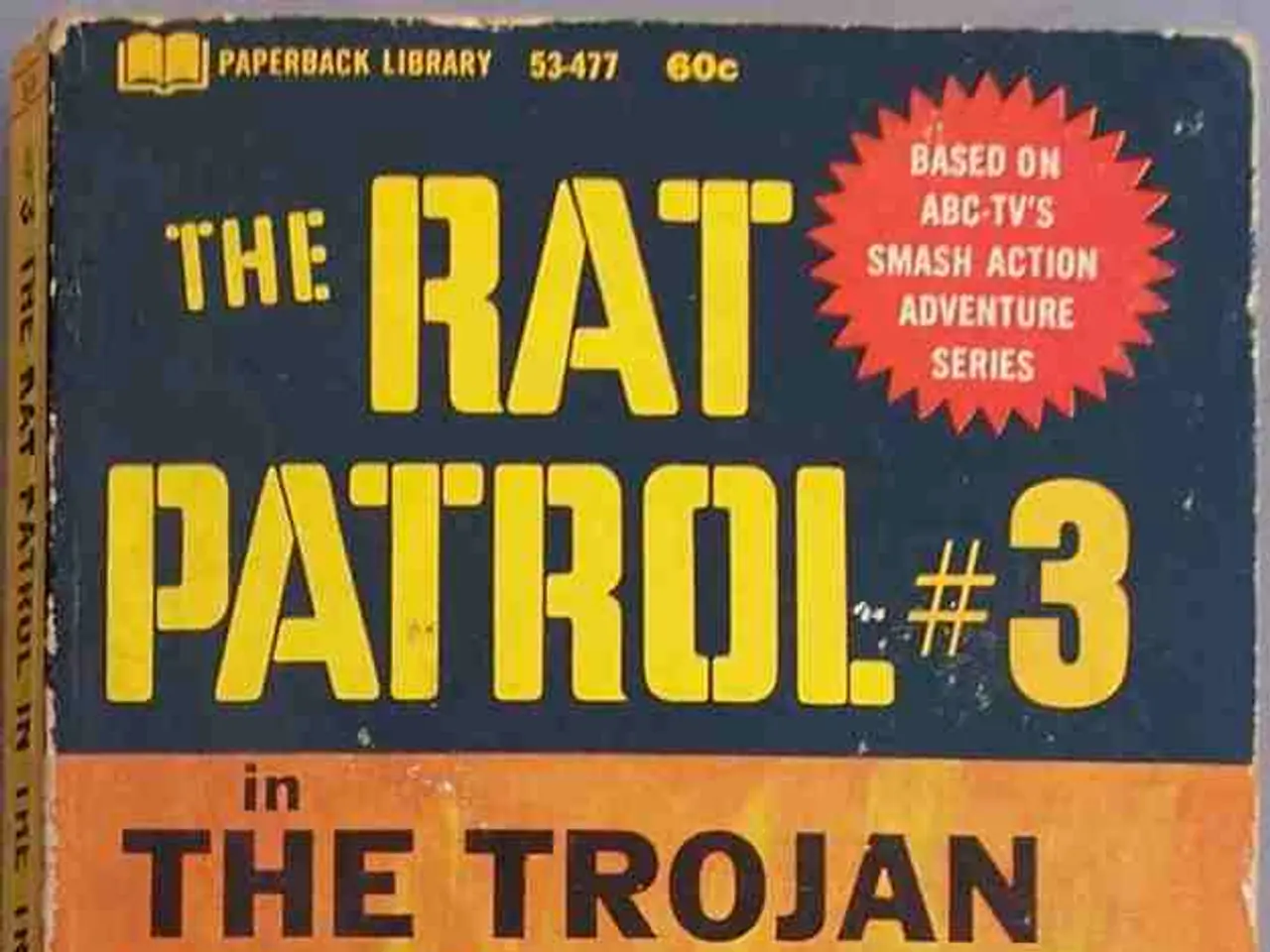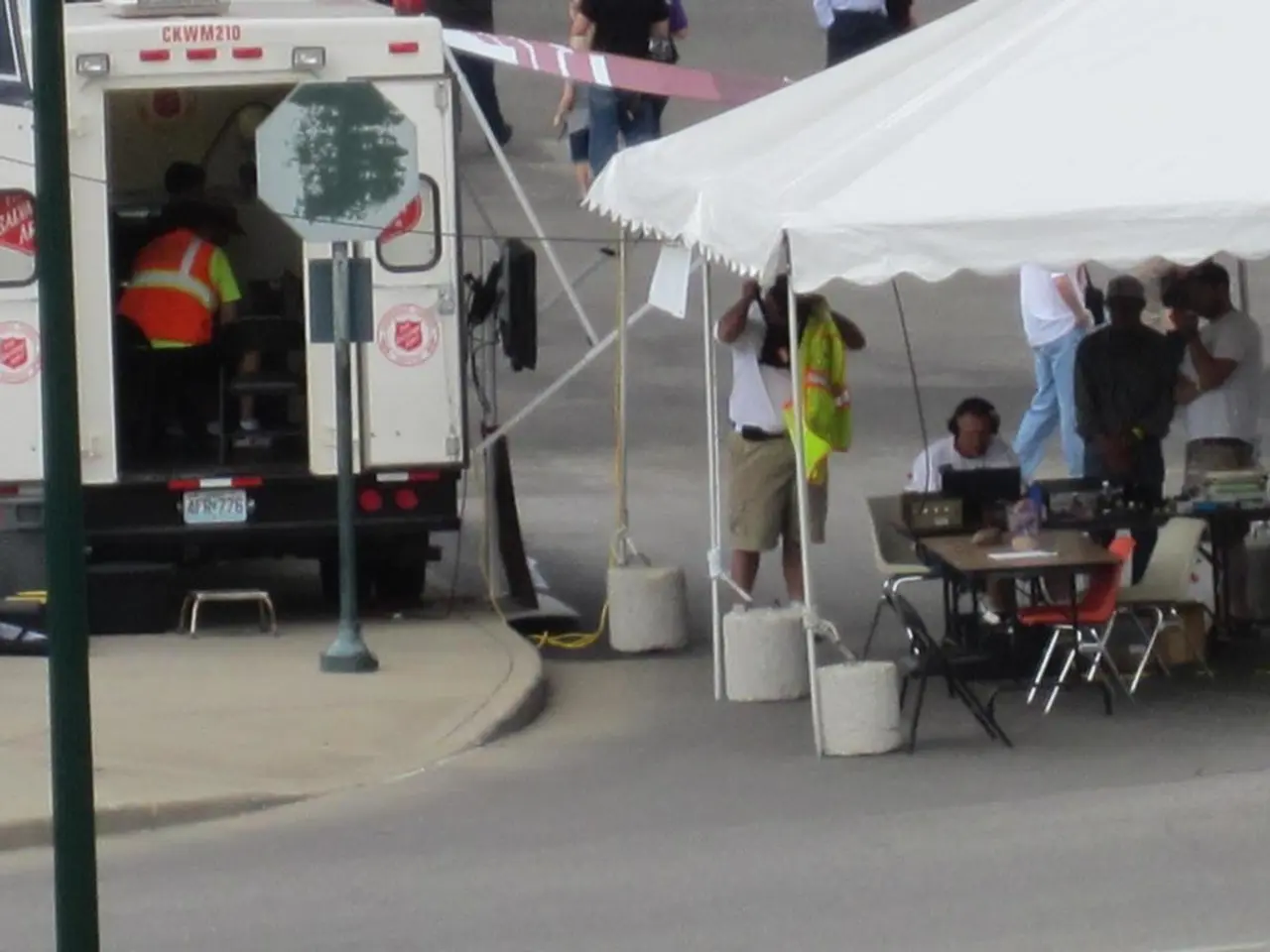Ukrainian drones collide within the premises of VNIIR in Chuvashia's jurisdiction.
In a series of escalating incidents, Russia has been under attack by a barrage of Ukrainian drones, targeting several regions including Chuvashia, Voronezh, Oryol, and Nizhny Novgorod. The most recent wave, reported in mid-July 2025, saw over 100 drones being intercepted simultaneously, with at least 49 being shot down overnight across seven regions of the country [1].
The intensity of these attacks is not only evident in their frequency but also in their scale. In the Voronezh region, for instance, a drone crashed into a residential building, resulting in injuries to three people [1]. neighbouring Belgorod region also reported casualties, with three fatalities and 17 injuries [1].
Moscow itself has not been spared, with multiple drones intercepted near the capital, prompting emergency responses and temporary flight restrictions at major airports such as Vnukovo, Kaluga Grabtsevo, and Pulkovo in St. Petersburg [1]. This pattern of Ukrainian drone attacks reaching deep within Russian territory is a cause for concern.
The regions with the most drone interceptions were Kursk and Nizhny Novgorod, each with 13 drones shot down [2]. Alexander Gusyev, the governor of Voronezh region, reported the incidents on his Telegram channel, while Nizhny Novgorod region governor Gleb Nikitin reported an attack in "several" districts of the region, with debris falling on a residential territory in one of them, preliminarily, no one was hurt [2].
Local residents in various regions have reported waking up due to the drone incidents and associated disturbances. In the Voronezh region, more than 25 drones were shot down in eight municipalities, causing damage to a low-pressure gas pipeline and leaving 22 subscribers temporarily without gas [2]. One house in the region was damaged due to drone debris, with a broken window, damaged roof, and wall, and fascia [2].
In a bid to control the spread of information about these incidents, authorities in Kaluga and Tula regions have begun fining journalists and social media users who publish photos and videos of drone strike aftermath [2]. Twelve regions across the country have already introduced administrative liability for posting such content, though for most of them, the norm remains "dormant" [3].
The impact of these drone attacks is far-reaching. Physical damage with casualties, including injuries and deaths in residential areas, has been reported in Voronezh and Belgorod [1]. Disruptions to civilian infrastructure and transportation, such as temporary flight restrictions at major airports, have also been observed [1]. Increased defensive operations and emergency response activities in the affected regions are a necessary response to these attacks [1].
The All-Russian Scientific Research Institute of Relay Engineering with Experimental Production ("VNIIR"), the leading Russian manufacturer of relay protection and automation systems for substations, as well as low, medium, and high voltage electrical equipment, has not been immune to these attacks. Two Ukrainian drones fell on the territory of JSC "VNIIR" in Chuvashia this morning, causing the plant's work to be stopped to ensure employee safety [2].
These drone strikes represent a significant element of Ukraine's increasing long-range offensive measures against Russia in 2025, contributing to an ongoing and intensifying conflict dynamic where drone and missile attacks are a primary tactic [1][2]. As the situation continues to evolve, it is crucial to monitor these incidents and their impact on the affected regions and the broader conflict dynamic.
[1] Kommersant, July 17, 2025 [2] TASS, July 18, 2025 [3] RIA Novosti, July 19, 2025
In light of these escalating drone attacks, there is a growing need for political negotiations to address war-and-conflicts between Russia and Ukraine. The general news media should also focus on crime-and-justice implications, as the recent wave of drone attacks has resulted in injuries and fatalities, causing chaos and disrupting civil life [1]. Furthermore, the new regulatory measures imposed on journalists and social media users in certain regions for publishing information about these drone strike aftermaths can be seen as an attempt to control the dissemination of general-news [2].








